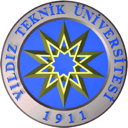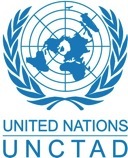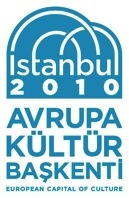Istanbul: From the Capital of Culture to the Global Creative City...

Vice Symposium Coordinator
A short time ago, an essential meeting took place at Yildiz Technical University Auditorium, within the scope of activities of Istanbul 2010 European Capital of Culture Agency, Urban Culture Directorate. The title of the meeting was “Creative Cities and Industries in the 21st Century”. Although we are used to the words of the title, alone, learning the new meanings that these words create together and the conceptual content of the symposium was a unique opportunity for us. Thus, 12 foreign experts and 18 native speakers working in this field and demonstrating these concepts in recent years came together for the first time and made presentations centralizing Istanbul. But who were these speakers and what have they told, discussed?
Heavy hitters of the symposium were: Charles Landry, who used the definition "Creative City" for the first time for Glasgow in the 1970s and consulted many of the urban organizations since then; John Howkins, who came up with the "the Creative Economy” concept by complementing "Creative City" idea with "Creative Industry"; Dr. Linda Lees, who carried the Creative City Model from examples from Britain to the US and worked on the indices developed to measure the creativity of cities; Dimiter Gancthev, the head of World Intellectual Property Organization, known as WIPO, who took attention to intellectual property rights, where there is creativity and production; Edna Dos Santos Duisenberg, Director of UNCTAD (United Nations Trade and Development Organization) Creative Economy and Industry Program; İsmail Ertürk, who is a Cultural Economics specialist at the University of Manchester. Besides these people, we need to regard Dr. PAN Jin, Vice President of the Creative Industries Centre in Shanghai; Ruhi Ayangil, the Dean of YTU, Faculty of Art and Design; Oli Mould from Loughborough University; Desmond Hui from Chinese University of Hong Kong; Beate Becker and Beth Siegel from the Auburn Union, Boston; Alnoor Mitha from Manchester Sisha; Fikret Toksöz from TESEV; Hüsamettin Kavi who is the Advisory Board Chairman of 2010 ICoC Agency; C. Tanıl Küçük the Chairman Istanbul Chamber of Commerce (ICC) and H. Uran Tiryakioğlu, the member of ICC; Agâh Uğur who is the CEO of Borusan Holding; Gündüz Vassaf who is a journalist, writer who emphasizes the originality of the subject and the city to evaluate the center of Istanbul; Esra Nilgun Mirze, 2010 Agency Foreign Affairs Director; Yeşim Yalman, the agency's Director of Urban Culture; Dr. Asım Güzelbey, Mayor of Gaziantep Metropolitan, who developed his own projects for the city; Aziz Yeniay, Mayor of Kucukcekmece Metropolitan Municipality; Nevzat Bayhan, Director of Culture Inc.; Asli Kıyak İngin, architect and design manager who demonstrated how the creative economy may become very successful for smaller productions; Arhan Kayar, the founder and coordinator of Design Factory and coordinator of Istanbul Design Week; Yiğit Şardan, the Head of the Association of Advertising Agencies which organized the workshop concerning to these issues in recent weeks.

WHAT WAS TALKED AND DISCUSSED?
The first session, which contained the essence of the issue, was carried out by Charles Landry, Edna dos Santos Duisenberg, and Ismail Erturk. The section that Dos Santos focused on how the creative economies can be developed in Turkey was relatively interesting. Dos Santos, while outlining the future economies becoming stronger by the developments in technology and design, she declared sincerely that UNCTAD will support Istanbul in this regard. Charles Landry talked about the developments guiding the economy since the last quarter of the 20th century that are associated with the Internet technology, information-hardware creativity. He stated that urbanization of cities should be formed according to the spirit, the vision and the capacity that they establish. Drawing attention to the relationship between commerce and creativity, Landry, emphasized that the accompaniment of the concepts of creativity, art and culture and therefore creative economy are inevitable. Ismail Ertürk, approached the issue in the context of economic crisis, by giving examples where the creative economies developed after crisis and explaining the findings of the positioning of Istanbul around this issue. The session which brought out the question "Is Istanbul a creative city?", searched the answers for "If so, where, how and in what context of activities do we see this creativity?
"Creative Industries as a National and Urban Economic Growth Model" has been the subject of another session, which included John Howkins, the master of this subject, Dimiter Gantchev from WIPO and H. Uran Tiryakioglu, Member of the Board of Istanbul Chamber of Industry. The most interesting part of the session was that the issue was being addressed in individual scale. Especially, Howkins emphasized that creativity is in individual's own mind and the free surroundings of the individual and the development is only possible with the individual’s creativity. This brought up the question of the state of freedom of our children in the traditional patriarchal family structure. Following this idea, in next session, Arhan Kayar highlighted the negative effects of solid education on individuals which start from the primary school and drew attention to the universities and the need for leading role of young people in this area. H. Uran Tiryakioğlu’s presentation which included stunning data showed that Turkey as the 16th economy between world's largest economies, cannot seal the current account deficit, and is seen as a market only and pointed out that creative production of industrial products are far behind the other countries. Tiryakioğlu also stated that, instead of a pessimist approach, a logical and rational approach is efficient and Turkey is overcoming the difficulties day by day.
IF THERE IS AN IDEA, THERE IS CREATIVITY
Dimiter Gancthev, who emphasized where the idea is not precious, the production of idea and therefore the creative production is wortless, suggested that the countries which value the intellectual property, reproduction rights, patent rights and development issues are far more creative. Yigit Şardan, at the last session, supported Gantchev with a similar approach by drawing attention to the value of idea to develop creativity. "How creativity is measured?", "Who and how the rankings of Creative cities are prepared?" were the form of discussion questions followed by the audience.
Certainly, the discussion on how Istanbul will change from the Capital of Culture to Global Creative City was the part which made this symposium unique and important. Especially in the roundtable which discussed the conditions of establishing an International Centre for Creative Cities and Industries intrigued interesting points.
Apparently, as planned, a center in Istanbul will be realized in the near future. Especially, considering the speeches by Dr. Supachai Panitchpakdi, General Secretary of the United Nations Conference on Trade and Development (UNCTAD) and Hayati Yazıcı, State Minister and Chairman of the Board of Istanbul 2010 ECOC Agency Coordination, at the opening of the symposium, the parties will be in cooperation for the establishment of the center.
We wish and hope, instead of sticking to clichés of Istanbul being "the capital of empires," “West of East”, “Historical Cultural Goods”, a center will be established on the ideas of singularity and dissimilarity of Istanbul and an atmosphere of production can be provided for creative industries in order to establish relationships with the world, offer a meeting place for ideas, discussions, work and production.
© Creative Cities and Industries in the 21st Century Symposium







